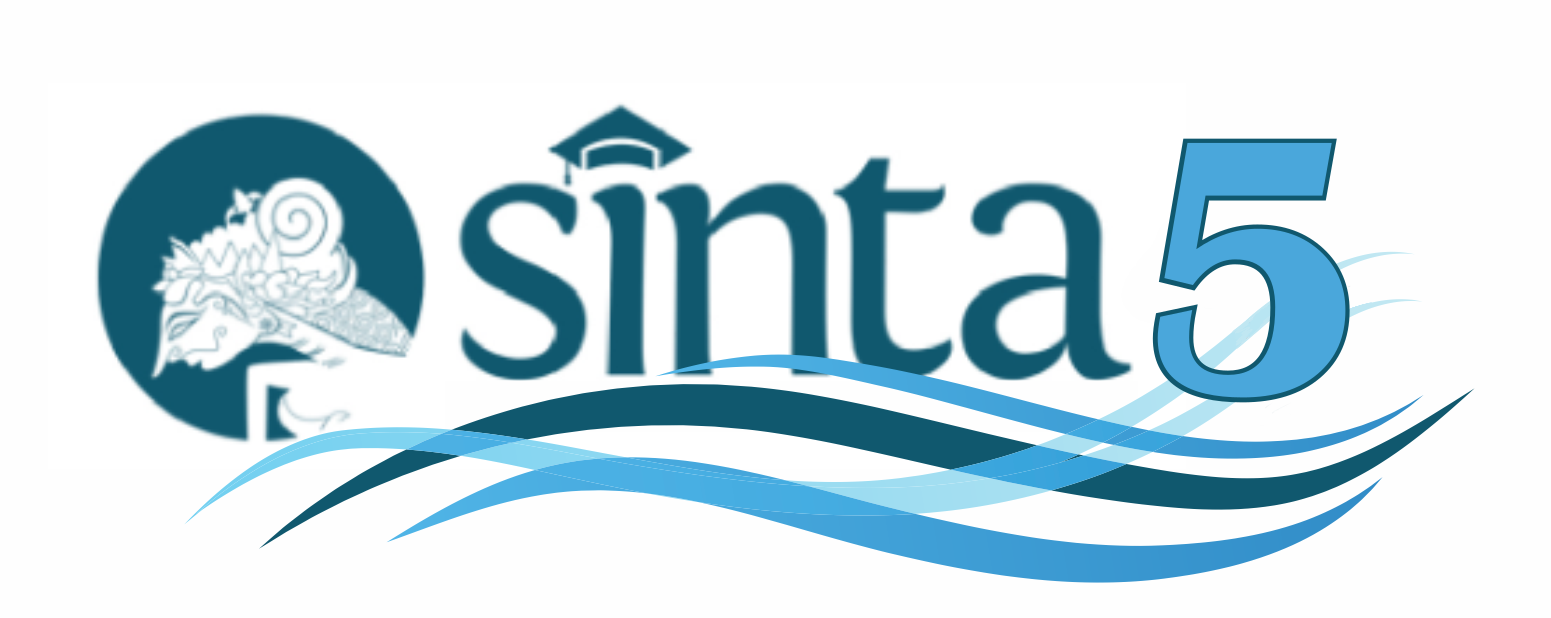AKTIVITAS JAMUR SIMBION SPONS TERHADAP JAMUR Trichophyton sp. DI PULAU BIAK, KABUPATEN BIAK-NUMFOR, PAPUA
DOI:
https://doi.org/10.31957/.v1i1.507Abstract
Jamur Trichophyton sp. merupakan penyebab penyakit kulit yang disebut dengan Tinea Imbrikata. Persebaran penyakit ini di Indonesia dapat ditemukan di wilayah tertentu antara lain Papua, Sulawesi dan Sumatra. Kasus Tinea imbrikata banyak ditemukan di bagian Selatan Samudra Pasifik dengan tingkat infeksi ditemukan sebesar 18% di Papua dan Papua New Guinea. Organisme laut memiliki potensi yang sangat besar dalam menghasilkan senyawa-senyawa aktif yang dapat digunakan sebagai bahan baku obat-obatan dibandingkan dengan senyawa yang dihasilkan oleh tumbuhan teresterial. Spons merupakan invertebrata laut berpori yang bersifat  filter feeder sehingga menjadi habitat bagi mikroorganisme. Jamur merupakan mikroorganisme simbion spons selain bakteri yang berpotensi sebagai sumber senyawa metabolit sekunder dalam bidang farmakologi. Tujuan dari penelitian ini adalah untuk mengetahui jenis-jenis jamur simbion spons C1K1 yang memiliki aktivitas antijamur terhadap jamur Trichophyton sp. Isolasi jamur simbion spons dilakukan dengan menggunakan metode pengenceran dan metode tempel. Identifikasi isolat jamur dilakukan dengan pengamatan morfologi koloni jamur yang terbentuk, kemudian dilakukan pemisahan isolat satu dengan lainnya. Hasil isolasi menunjukan terdapat 25 isolat jamur simbion spons (C1K1). Analisis pengujian antijamur tahap awal dilakukan dengan metode overlay dimana diperoleh 4 isolat jamur yang memiliki aktivitas antijamur terhadap jamur Trichophyton sp.
Kata kunci: Trichophyton sp., jamur simbion spons, metabolit sekunder
Downloads
References
Barnett, H.L. & B.B. Hunter. 2003. Illustrated genera of imperfect fungi. 4th ed. Prentice Hall, Inc., U.S.A: xxi + 218 hlm.
BBALITVET. 2009. Beberapa Tanaman Biofarmaka untuk Penanggulangan Penyakit Ringworm dan Kuman Enterobacter. Laporan Akhir Penelitian Bansos DIKTI (SINTA) T.A. 2009. Balai Besar Penelitian Veteriner, Bogor. 27 hlm.
Bugni TS, Ireland CM. 2004.Marine-derived fungi: A Chemically and Biologically Diverse Group of Microorganisms.Nat. Prod. Rep., 21:143-63.
Castro, P. and Huber, M.E. 2005. Marine Biology, Fifth edition. The Mc Graw Hill Companies.
Ebel, R. 2010. Terpenes from Marine Derived Fungi. Marine Biodiscovery Centre
Gandjar, I. Samson,. A.R. Oetari dan A. Santoso,I. 1999. Pengenalan Kapang Tropik Umum.Yayasan Obor Indonesia. Jakarta. hal. 120.
Gholib, D dan S. Rachmawati. 2010. Kapang Dermatofit Trichophyton verrucosum penyebab Penyakit ringworm pada sapi. Wartazoa. 20 (1): 43-53.
Koneman, E.W. & G.D. Roberts. 1985. Practical laboratory mycology. 3rd ed. Williams and Wilkins Publisher, Baltimore: vii + 211 hlm.
Kohlmeyer J, Kohlmeyer E . 1979. Marine mycology: The Higher Fungi. Academic Press, New York.
Lay, B dan Hastowo, S. 1992. Mikrobiologi. Rajawali Pres: Jakarta
A.M., Kheiralla, Z.H., Hamed, E.R., Youssry, A.A., and Aty, A.E. 2008. Production of some biologically active secondary metabolites from marine-derived. Malaysian Journal of Microbiology. 4(1): 14–24.
Mousavi, S.A.A., Samira, S.S. and Sadollah, Shamsadini. 2009. A first case of tinea imbricata from Iran. Microbiology. 2(2): 71-74.
Muniarsih, T. dan Rachmaniar, R. 1999. Isolasi Substansi Bioaktif Antimikroba dari Spons Asal Pulau Pari. Prosiding Seminar Bioteknologi Kelautan Indonesia. LIPI, Jakarta 14-15 Oktober 1998. Pp 151-158
Proksch, P., R. A. Edrada., and R. Ebel. 2002. Drugs from The Seas - Current Status and Microbiological Implications. Appl. Microbiol. Biotechnol: (59) 125 - 134.
Radjasa, O.K., T. Martens., H.P. Grossart., T. Brinkoff., A. Sabdono and M. Simon. 2007. Antagonistic activity of a marine bacterium Pseudoalteromonas luteoviolacea TAB4.2 associated with coral Acropora sp. J. Biol. Sci., 7(2):239-246.
Rosita, 2008. Etiopatogenesis Dermatofitosis (Etiopathogenesis of Dermatophytoses.Ilmu kesehatan kulit dan kelamin. 2 (3): 243-250.
Sabdono, A., and O.K. Radjasa. 2006. Anti – Bacterial Property of A Coral-Associated Bacterium Basillus sp. Againts Coral Pathogenic Black Band Disease (BBD). J.coast.dev, 9 (3) : 175
Samson, R.A., E.S. Hoekstra, & J.C. Frisvad. 2004. Introduction to food and airborne fungi. Centraalbureau Voor Schimmelcultures, Utrecht: 383 hlm.
Sjamsoe, E.S., Daili, Menaldi, S.L. dan Wisnu, I.M. 2005. Penyakit Kulit Yang Umum di Jakarta. PT Medical Multimedia Indonesia.
Strobel, G. and Daisy, B. 2003. Biosprospecting for Microbial Endophytes and Their Natural Products. Microbiol and Mol. Biol. 67: 491-502.
Torssell, K. B. G. 1983. Natural product chemistry: Aistryof the genus Sideritis from the CanaryIslands.Mechanistic and Biosynthetic Approach to Secondary Biochem . System. Ecol. 7, 115D120. Metabolism. John Wiley& Son, Chichester, U. K.
Thakur, N.L. and Muller, W.E.G. 2004. Biotechnological potential of marine sponges. Current Science. 86 (11): 1506-1512.
Vasanthabharathi, V. dan Jayalaksmi, S. 2012. Bioaktive Potential of Bacteria and Fungi From Marine Sponges. Journal of Biotechnology. 1 (28):7500-7511.
Zheng L., H. Chen., X. Han. dan X. Yan. 2005. Antimicrobial screening and active compound isolation from marine bacterium NJ6-3-1 associated with the sponge Hymeniacidon parleve. World Journal of Microbiol and Biotech. 21:201-206.
Downloads
Published
Issue
Section
License
Authors who publish with this journal agree to the following terms:
- Authors retain copyright and grant the journal right of first publication with the work simultaneously
licensed under a Creative Commons Attribution-NonCommercial-ShareAlike 4.0 International License
that allows others to share the work with an acknowledgement of the work's authorship and initial
publication in this journal. - Authors are able to enter into separate, additional contractual arrangements for the non-exclusive
distribution of the journal's published version of the work (e.g., post it to an institutional repository
or publish it in a book), with an acknowledgement of its initial publication in this journal. - Authors are permitted and encouraged to post their work online (e.g., in institutional repositories or
on their website) prior to and during the submission process, as it can lead to productive exchanges,
as well as earlier and greater citation of published work (See The Effect of Open Access).




















